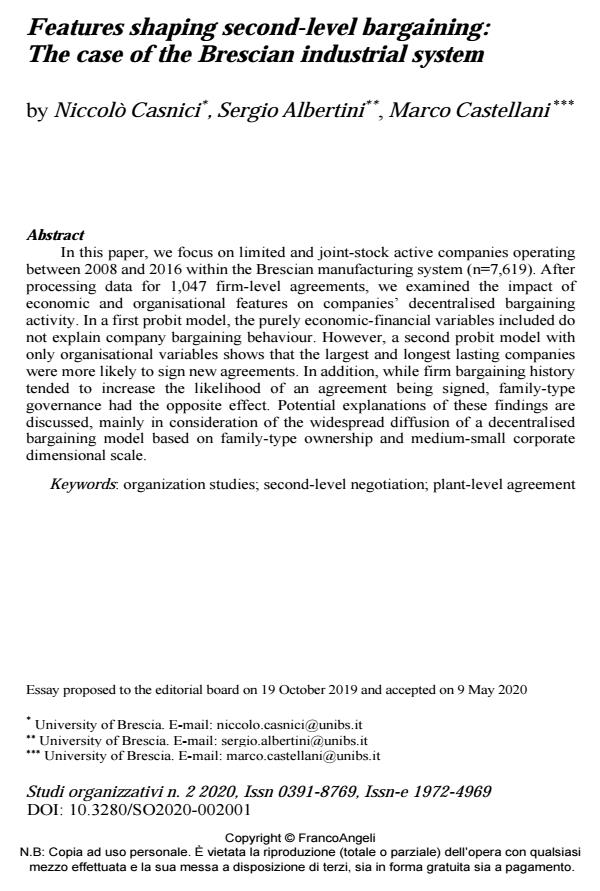Features shaping second-level bargaining: The case of the Brescian industrial system
Journal title STUDI ORGANIZZATIVI
Author/s Niccolò Casnici, Sergio Albertini, Marco Castellani
Publishing Year 2020 Issue 2020/2
Language English Pages 27 P. 9-35 File size 292 KB
DOI 10.3280/SO2020-002001
DOI is like a bar code for intellectual property: to have more infomation
click here
Below, you can see the article first page
If you want to buy this article in PDF format, you can do it, following the instructions to buy download credits

FrancoAngeli is member of Publishers International Linking Association, Inc (PILA), a not-for-profit association which run the CrossRef service enabling links to and from online scholarly content.
In this paper, we focus on limited and joint-stock active companies operating between 2008 and 2016 within the Brescian manufacturing system (n=7,619). After processing data for 1,047 firm-level agreements, we examined the impact of economic and organisational features on companies’ decentralised bargaining activity. In a first probit model, the purely economic-financial variables included do not explain company bargaining behaviour. However, a second probit model with only organisational variables shows that the largest and longest lasting companies were more likely to sign new agreements. In addition, while firm bargaining history tended to increase the likelihood of an agreement being signed, family-type governance had the opposite effect. Potential explanations of these findings are discussed, mainly in consideration of the widespread diffusion of a decentralised bargaining model based on family-type ownership and medium-small corporate dimensional scale.
Keywords: Organization studies; second-level negotiation; plant-level agreement
Niccolò Casnici, Sergio Albertini, Marco Castellani, Features shaping second-level bargaining: The case of the Brescian industrial system in "STUDI ORGANIZZATIVI " 2/2020, pp 9-35, DOI: 10.3280/SO2020-002001